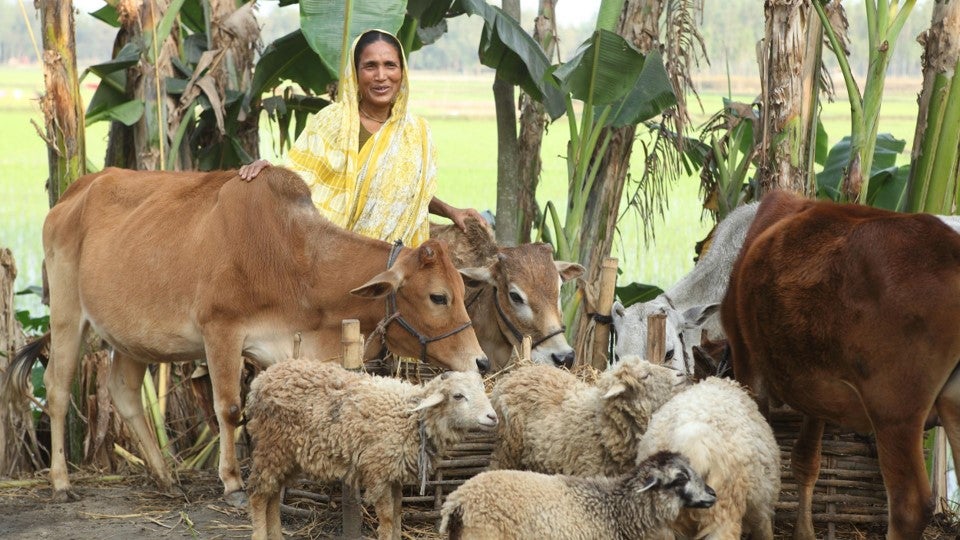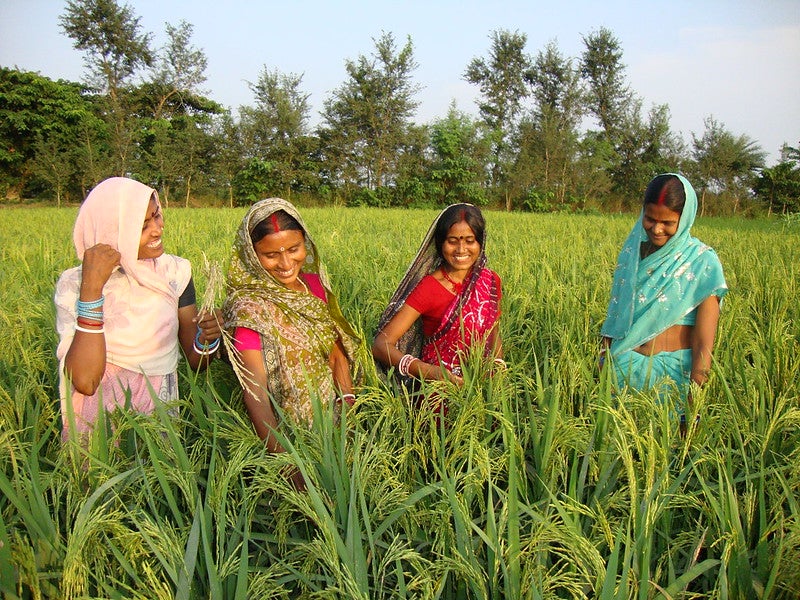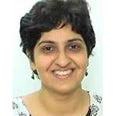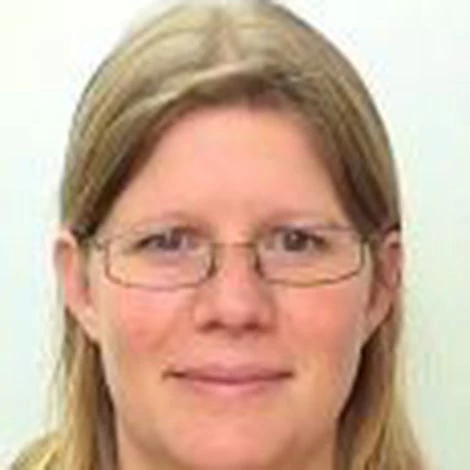 Since 2002, programs which run on the BRAC model or those directly implemented by BRAC have reached 14 million ultra-poor people across 50 countries, 95 percent of whom have pulled themselves out of extreme poverty.
Since 2002, programs which run on the BRAC model or those directly implemented by BRAC have reached 14 million ultra-poor people across 50 countries, 95 percent of whom have pulled themselves out of extreme poverty.
Belonging to an extremely poor family in Bangladesh, Kuntola had always wanted to study but her parents were too poor to send her to school. Married at 14 and abandoned by her husband soon after the birth of her son, Kuntola felt worthless. Until, in 2005, she enrolled in BRAC’s Ultra-Poor Graduation program. She was given some livestock, trained in animal rearing, granted stipends to help her meet her family’s daily needs and provided healthcare support. Today, as a thriving entrepreneur with a sizeable goat-rearing business, Kuntola earns 200,000 Bangladeshi Taka ($2,100) a month, enabling her to fulfil her lifelong dream of sending her son to university.
In Bihar, India, Azamati’s life too turned around dramatically. Three years ago, this differently-abled widow thought of taking her own life. She earned just Rs. 30 (37 cents) a day as a domestic help. That was until Bihar’s Jeevika program – a World Bank supported initiative that focused on the poorest of the poor – extended Azamati the financial assistance to open a store. Today, Azamati brings in Rs. 5,000 ($62) a month, enabling her to notch up a tidy saving of nearly Rs. 50,000 ($625) in her bank account.
Both Bangladesh and India have run poverty alleviation programs before. In fact, India’s National Rural Livelihood Mission (NRLM), supported by the World Bank, is one of the world’s largest community mobilization efforts, organizing more than 80 million poor women into over 7.4 million self-help groups.
But the program soon found that some of the poorest people were being left out because they were too poor to avail of the livelihood or microcredit opportunities on offer. They were stuck in a ‘poverty trap’ – with no assets, no skills, and no way out. Even if a micro-credit program reached them, they had no way of repaying their loans as all their income went towards survival.
In February 2022, NRLM requested the World Bank to organize a knowledge event to learn about different global and local approaches that could help target the poorest, most marginalized women in the villages. This, they said, was a frontier challenge which, if addressed, could help eliminate extreme poverty in the country. While India has reduced extreme poverty significantly – from 22.5 percent in 2011 to 10.2 percent in 2019 - the number of its ultra-poor remains larger than the total populations of Vietnam, Thailand or Germany. By World Bank estimates, nearly 140 million of India’s people live on less than $1.90 a day. Other estimates suggest that nearly 110 million people are food insecure and rely on the government’s subsidized food distribution program - the Antyodaya Anna Yojana (AAY) - for survival.
In a speech given in London in 2018, the Prime Minister of India remarked: ‘To remove poverty, we need to strengthen the hands of the poor’.
Perhaps the most widely known approach that provides a ‘big push’ to help the poorest of the poor escape extreme poverty is BRAC’s Ultra-Poor Graduation model. Since 2002, programs which run on the BRAC model or those directly implemented by BRAC have reached 14 million ultra-poor people across 50 countries, 95 percent of whom have pulled themselves out of extreme poverty. Evaluations show that beneficiaries were able to sustain consumption and economic security even 8.5 years after the intervention ended.
In the African drylands too, the BOMA project used an approach similar to the BRAC model. Since 2009, BOMA – which means ‘enclosure’ in Swahili – has been able to transform the lives of more than 450,000 poor women and children, nearly 93 percent of whom escaped extreme poverty within two years of assistance. In India, Bihar’s Jeevika program, which also runs on the BRAC template, has enabled more than 100,000 of the poorest households to become food secure through a package of interventions.
To distill key lessons from these programs, the World Bank, in partnership with the Government of India’s Ministry of Rural Development, organized a learning event where senior officials from BRAC, BOMA, Jeevika and NRLM participated.
Experiences from such models present 10 key takeaways.
- Treat the poor as co-creators rather than as beneficiaries.
- Create federations of poor men and women to enable them to access markets and services and have a voice in village spaces, including on political and social issues.
- Assess a family’s specific needs. A tribal family’s needs will differ from one that is headed by an elderly person or a differently-abled woman.
- Identify what leads households into poverty before designing interventions because the poor get stuck in poverty traps for different reasons. In India, these reasons may have to do with social norms (belonging to a Scheduled Caste or Tribe, for instance) or living with disability or a life condition (such as becoming a widow).
- Provide intensive, targeted facilitation in the form of direct cash grants, training in new skills, ensuring food security, and supporting health interventions. BRAC realized early on that without improved access to health services, participants would slide back into poverty.
- Ensure that interventions are multi-sectoral, structured, well-sequenced and time bound for 18-24 months, until the family graduates into a sustainable livelihood.
- Choose a dedicated grassroots cadre to help identify the most vulnerable in the community. In Jeevika, the older SHG members played this role.
- Connect poor households to social institutions such as self-help groups as this will offer them access to a more sustainable, federated mass and better market opportunities.
- Keep ultra-poor programs flexible, especially in a country as vast and diverse as India. Programs should also be open to including new categories of the extreme poor, for example, ‘climate migrants’.
- Finally, none of this support can succeed without investments in state systems and capacity to enable constant learning. Using technology for monitoring can help facilitate agile responses. For instance, BOMA introduced several digital tools which helped hasten the process of learning and adaptation on the ground.
The World Bank is now working with the National Rural Livelihoods Mission to use these lessons for reaching ultra-poor women more effectively, helping realize the dream of a Garibi Mukt Bharat - a poverty-free India.
Related link: Charcha 2022: Ending Ultra Poverty in India





Join the Conversation